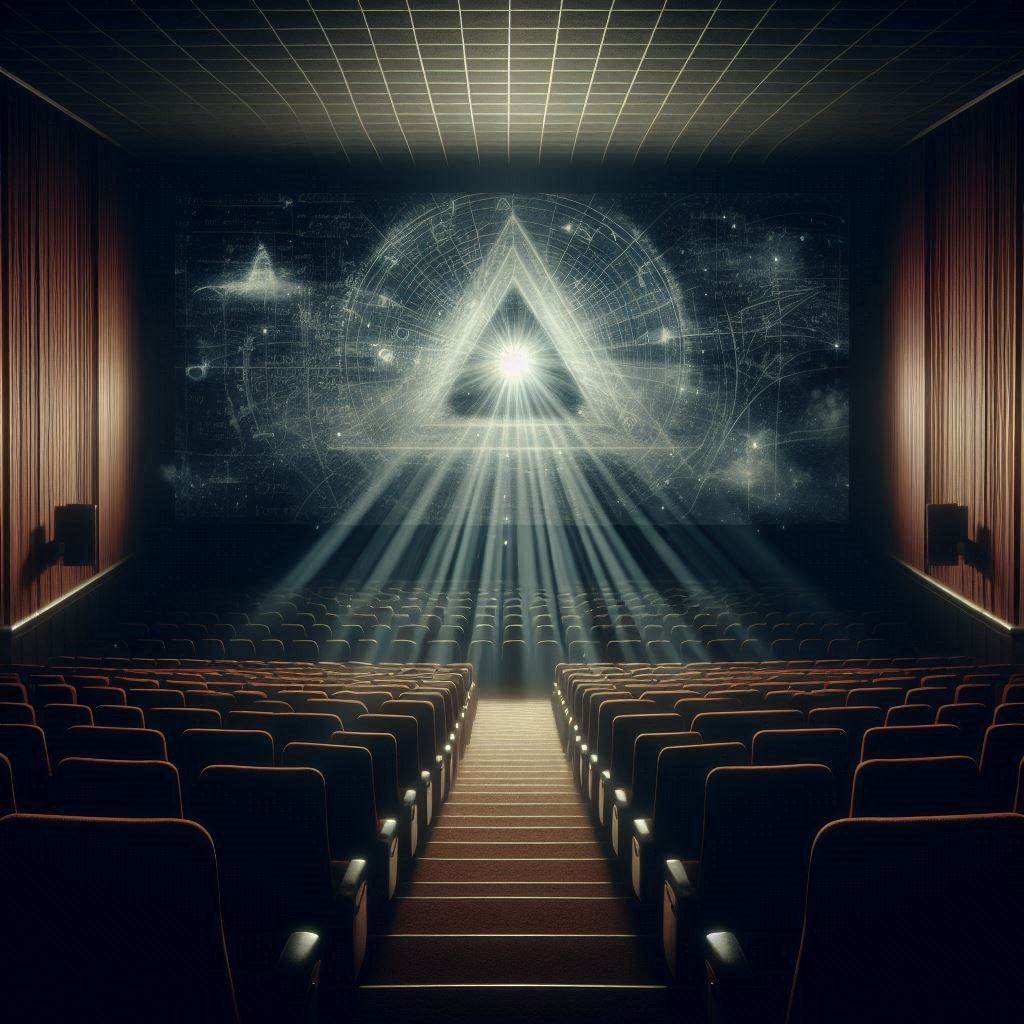Predictive Programming in Movies: Coincidence or Conspiracy?
Introduction
Predictive programming is a theory that suggests movies, television shows, and other forms of popular media are used to subconsciously prepare the public for future real-world events. Conspiracy theorists argue that hidden messages in films and TV series foreshadow major political, social, or technological changes, often orchestrated by powerful elites. These theories have gained traction online, with examples frequently cited from movies like The Matrix, The Simpsons, and Contagion as supposed proof of foreknowledge.
Advocates of predictive programming believe that by repeatedly exposing audiences to particular ideas, those in control can subtly influence public perception and behavior. The theory suggests that when a major event occurs, the population will be less likely to question it, as they have already seen it unfold in fictional scenarios. Some theorists even claim that this technique is used to manufacture consent for policies or societal changes that would otherwise be met with resistance.
Is predictive programming real, or is it merely a pattern-seeking fallacy? In this article, we will examine the claims made by conspiracy theorists, analyze the supposed evidence, provide scientific explanations and fact-checking resources, and explore whether predictive programming is a legitimate phenomenon or just a coincidence.
Conspiracy Theory 1: Hollywood Foreshadows Future Events
The Claim
Many conspiracy theorists believe that movies and television shows are deliberately scripted to introduce the public to ideas that will later unfold in real life. They argue that this is done to desensitize people, making them more likely to accept controversial events without resistance. Examples frequently cited include:
- The Simpsons predicting Donald Trump’s presidency and the 9/11 attacks.
- The Dark Knight Rises allegedly hinting at the Sandy Hook shooting.
- Contagion supposedly forecasting the COVID-19 pandemic.
- The Matrix foreshadowing the rise of artificial intelligence and virtual reality.
Supporters of the theory argue that the repeated use of similar themes across various films is no accident. They believe Hollywood is controlled by a small group of elites who coordinate the release of films to subtly manipulate public perception. According to this perspective, predictive programming is not just about making movies—it is about shaping the world.
The Evidence
- Many movies contain scenarios that resemble real-world events that happened years later.
- Certain films appear to reference specific locations, names, or dates linked to future tragedies.
- Hollywood’s connection to government agencies, such as the CIA’s involvement in shaping film narratives, fuels suspicions.
- Some believe elites use predictive programming to test public reactions and normalize extreme changes.
- Similar themes, such as surveillance, pandemics, and war, are repeatedly emphasized in movies, reinforcing societal fears and anxieties.
- Theories point to films released shortly before major historical events as potential warnings or foretellings, such as The Long Kiss Goodnight (1996) referencing an inside job attack years before 9/11.
The Debunking
- Coincidence and Statistical Probability: With thousands of movies and TV episodes created each year, some are bound to resemble future events purely by chance.
- Selective Confirmation Bias: People tend to notice instances that support their beliefs while ignoring countless movies that don’t predict anything.
- Retroactive Interpretation: Many so-called predictions are recognized only after an event has occurred, making them unreliable as actual warnings.
- Government Influence vs. Conspiracy: While agencies like the Pentagon or NASA provide consultation for movies, it’s typically to ensure accuracy rather than to embed secret messages.
- Parallel Thinking: Writers and filmmakers often speculate about the future based on existing trends, meaning their ideas sometimes happen to align with reality.
Fact-Checking
- Snopes on The Simpsons Predictions
- FactCheck.org on Hollywood and the CIA
- Scientific American on Conspiracy Theories
Conspiracy Theory 2: Predictive Programming and 9/11
The Claim
One of the most widely discussed examples of predictive programming is the claim that the 9/11 attacks were foreshadowed in movies and TV shows before 2001. Supporters argue that various films and cartoons hinted at the attacks long before they happened, conditioning the public to accept the event.
The Evidence
- The 1997 The Simpsons episode showing a magazine with the numbers “9” and “11” next to the Twin Towers.
- The 1999 movie The Matrix featuring a passport with an expiration date of September 11, 2001.
- The 1998 film Armageddon mentioning a devastating attack on New York City.
- The 1978 episode of The X-Files spinoff The Lone Gunmen, which depicted a plane hijacking aimed at the World Trade Center.
- Back to the Future (1985) allegedly includes symbolic references to 9/11, such as the clock tower scene being viewed as an omen of destruction.
The Debunking
- Contextual Coincidence: Many of these supposed predictions involve vague imagery or unrelated plotlines that people later connect to real events.
- Creative Storytelling: Disaster movies have long used New York City as a backdrop for destruction because it is an iconic city, making it more likely that fictional disasters mirror real ones.
- Psychological Pattern Recognition: The human brain is wired to find patterns in randomness, often leading to false connections.
- Symbolism vs. Reality: Many cinematic choices, like numbers and locations, are based on artistic decisions rather than intentional warnings.
Fact-Checking
Conspiracy Theory 3: COVID-19 and Hollywood Warnings
The Claim
The COVID-19 pandemic is another event that conspiracy theorists claim was pre-planned and introduced through predictive programming. Films like Contagion (2011) and TV series like The X-Files allegedly hinted at the outbreak years before it happened.
The Evidence
- Contagion depicts a viral pandemic with symptoms similar to COVID-19 and references social distancing, vaccines, and misinformation.
- The X-Files episode “My Struggle II” (2016) talks about a planned viral outbreak and forced vaccinations.
- Utopia (2013) presents a storyline involving a deadly virus and a conspiracy surrounding its origins.
The Debunking
- Scientific Forecasting: Scientists have long warned about the risks of global pandemics, and Contagion was based on real epidemiological research.
- Common Narrative Tropes: Virus outbreaks have been a staple of science fiction and horror for decades, making it unsurprising that fictional pandemics resemble real ones.
- Hindsight Bias: Many claims of predictive programming emerged only after COVID-19 began, suggesting they are retrospective interpretations rather than genuine foresight.
Fact-Checking
Conclusion
Predictive programming remains a fascinating and controversial topic. While conspiracy theorists see patterns that suggest hidden messages, skeptics argue that these connections are often coincidental. The human mind seeks meaning, and in doing so, sometimes creates links where none exist. While it is important to question narratives, a balanced approach that considers evidence is essential.
Do you believe in predictive programming? Share your thoughts in the comments below!

